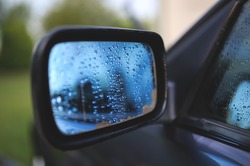
Dangerous driving habits increase the potential for car accidents and avoiding these behaviors is essential for staying safe behind the wheel. Unfortunately, many drivers have a difficult time recognizing that their driving behaviors are unsafe. The following are some common driving behaviors that can help motorists gauge their performance behind the wheel.
Driving Too Fast for Conditions
Weather is a considerable factor in causing accidents, and most weather-related accidents are caused by driving too fast for conditions including on ice/snow, through fog, or in rainstorms. In fact, speeding, in general, is a common dangerous driving behavior that is responsible for a significant number of automobile accidents each year.
Driving Too Slow
Drivers are expected to keep up with the flow of traffic, and driving too slow increases the risk of faster-moving traffic attempting to pass when it’s unsafe or causing a rear-end accident.
“California Stops”
Whether it’s at a deserted intersection or in the middle of the day, it’s important to come to a complete stop at red lights and stop signs. Many “t-bone” accidents are caused by drivers who fail to notice oncoming traffic as they roll through stop signs and stop lights. Similarly, trying to “beat the light” by speeding up and running through on yellow is just as dangerous.
Tailgating & Following Too Closely
Motorists should closely monitor the distance between their vehicle and vehicles in front of them. Especially in heavy traffic conditions, motorists should maintain sufficient stopping space between vehicles as the ebb and flow of the travel lanes can come to a sudden stop which can create conditions conducive for pile-ups that can be particularly deadly.
Failing to Signal & Not Checking Blindspots
Motorists are required to signal their intentions via turn signals. Moreover, it is crucial to check mirrors and blind spots to ensure that oncoming traffic is a sufficient distance away to allow for the maneuver. Even when no maneuver is planned, drivers should avoid driving distractions and continually check their mirrors and peer out the window to determine the movements of vehicles in close proximity.
Finally, not wearing seatbelts is a dangerous behavior that’s easily rectified. Wearing a seat belt significantly reduces the risk suffering serious personal injuries should an accident occur.

